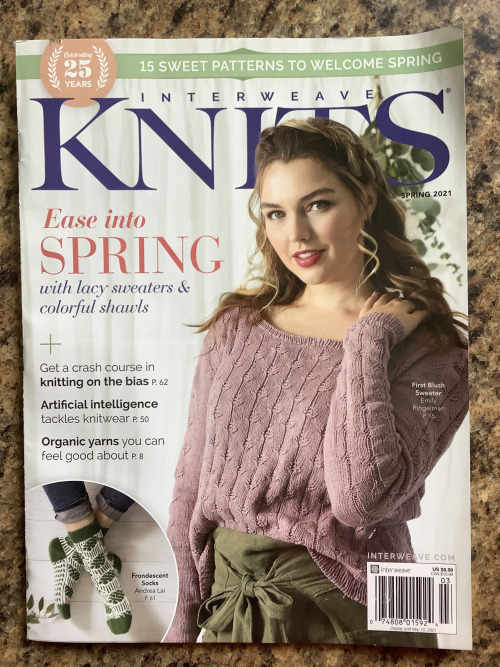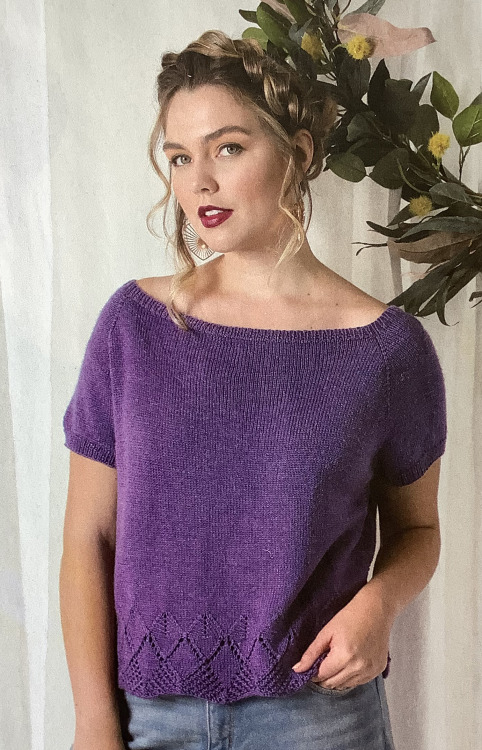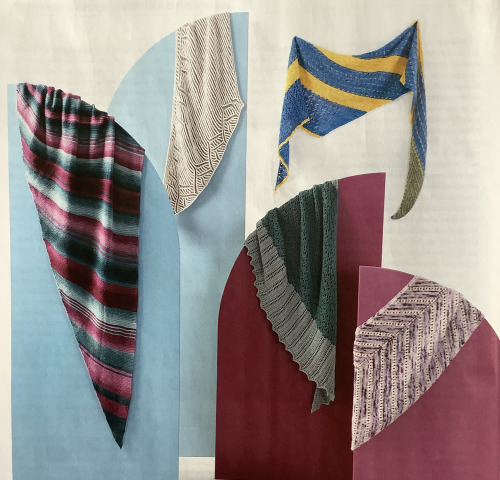Interweave Knits, Spring 2021Yes, spring has come to the world of knitting patterns so that you can
Interweave Knits, Spring 2021Yes, spring has come to the world of knitting patterns so that you can get something finished by the time the season rolls around. This issue has a variety of lace patterns for sweaters and a variety of shaped shawls in mixed fibers for the range of temperatures the season brings. I am keenest on the sweaters as I have figured out that my limited skills mean that I can actually finish sleeveless and short-sleeved sweaters before the season turns again. On the cover, you see the old rose First Blush Sweater by Emily Ringelman which has one of those very deep, dramatic v-neck backs which only stay closed through a tie across the top of the shoulders. Of course, as anyone familiar with the project notes that knitters offer on Ravelry.com knows, altering a pattern is a common practice, so if you aren’t so keen on the back view and want a daytime sweater, feel free to do it . This was made in Kelbourne Woolens Mohave, a cotton/ linen blend. Another dramatic view comes with the Hopeful Romantic Top in taupe in Julie Asselin Leizu DK or Merino mostly and silk. Designed by Kate Scalzo, it has has a high collar, cut-in sleeves and a combination of stitches. You can easily imagine it worn at a spring wedding with a long skirt and a wrap. Subtle Spring Tee in a pale pink by Rachel Brockman has top-down construction and a circular yolk marked by delicate leaf motifs, while the same top-down construction shapes Day Dreamer Tee by Susanna IC who shifts the lace down towards the hem line instead. The first is made from Fibra Natura Ravella which is mostly cotton with Merino wool and recycled cashmere to warm it up a bit while the second is Cascade Yarns Heritage Silk which is mostly Merino with silk added. Karen Frisa offers a article on the basics of knitting on the bias which is used in some of the shawls. There are also two pairs of socks, one you see on the cover. Interestingly, very few of the sweaters have any shaping at the waist, but again. If you prefer shaping, you can always make a few calculations as to how many decreases you need to make and then how many increases after that. You can find it at your local newsstand, bookstore or online here: https://www.interweave.com/product-category/knitting/knitting-magazines/?section=knitting -- source link
#knitting#knitting patterns#knitting magazine#interweave knits#interweave#emily ringelman#ravelry#ravelrycom#kelbourne woolens#julie asselin#kate scalzo#rachel brockman#susanna ic#fibra natura#cascade yarns#karen frisa#diy projects#makers#making




